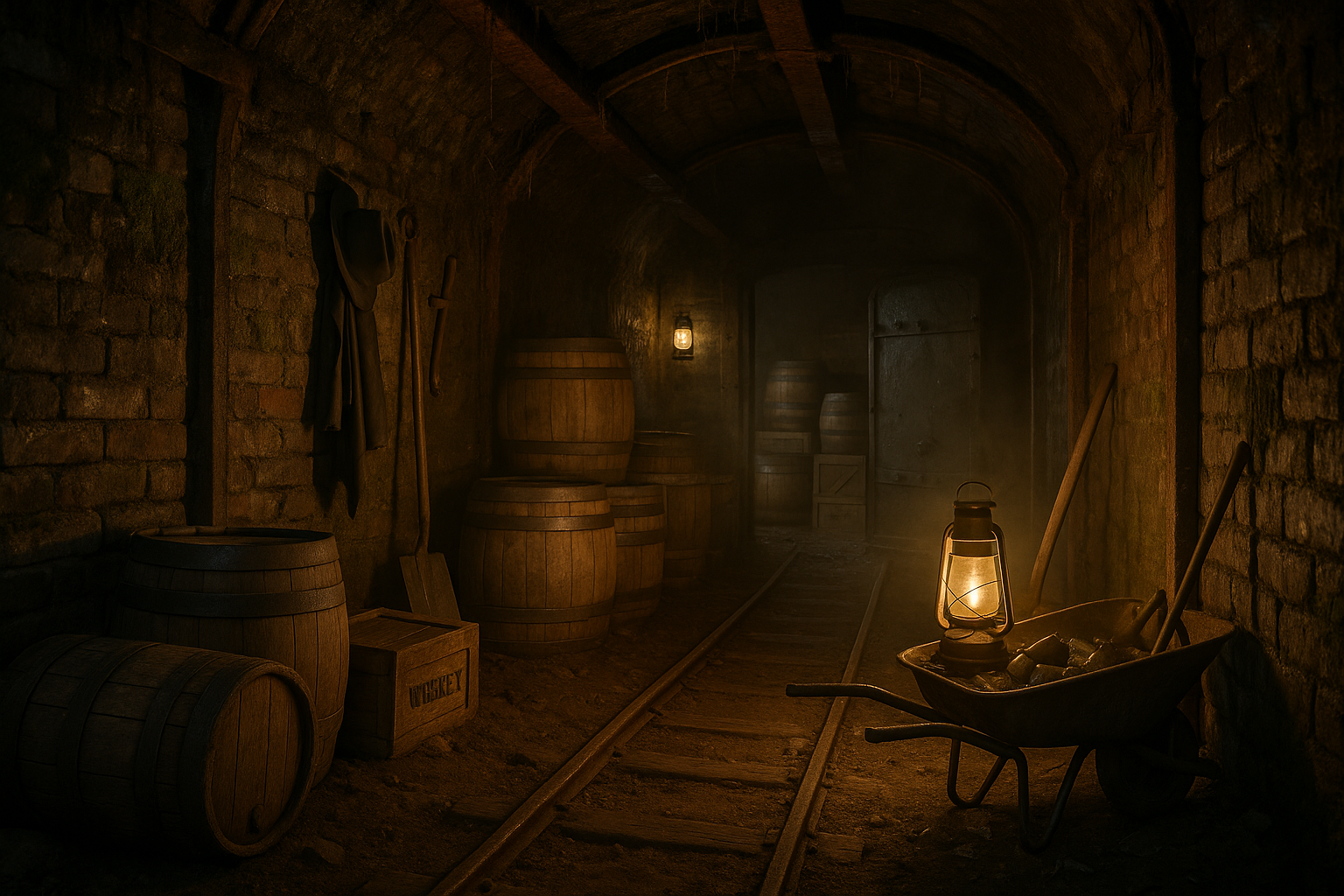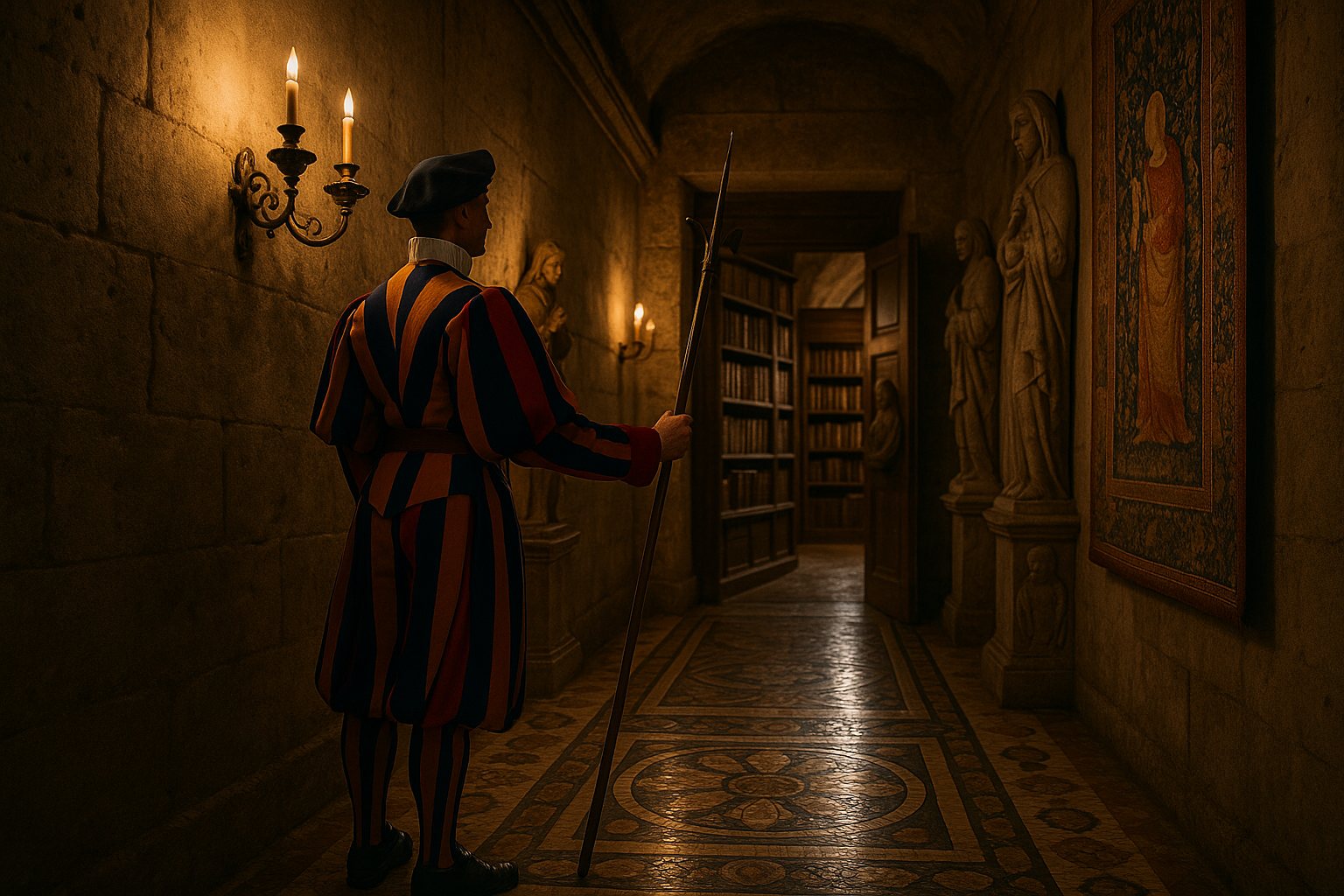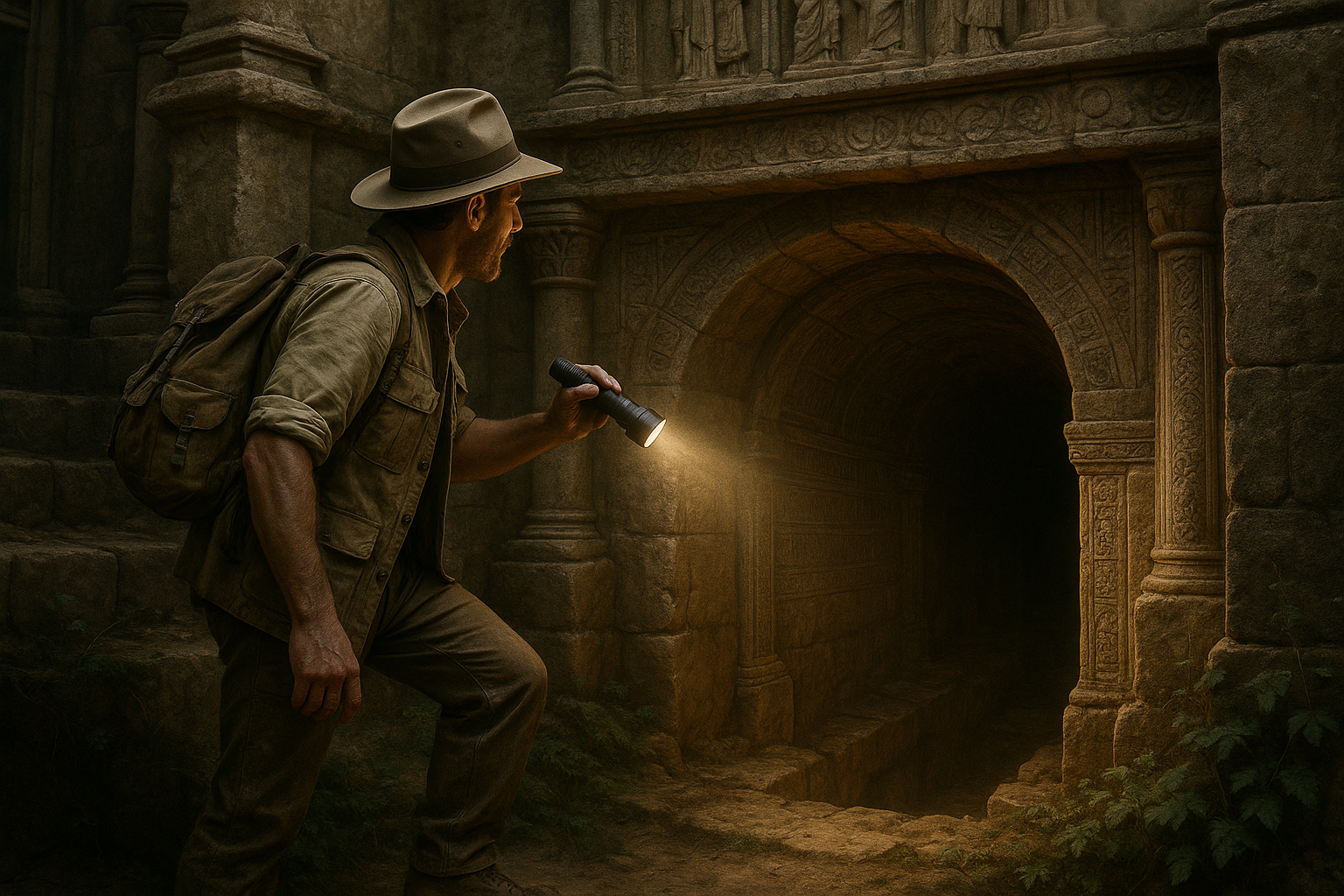Deep beneath the cobblestone streets and bustling squares of Europe lie whispers of a time long past, waiting to be discovered by those curious enough to venture into the shadows. The medieval tunnels of Europe are more than mere passageways; they are portals to a world steeped in mystery, intrigue, and history. These subterranean labyrinths, often overlooked in favor of the towering castles and cathedrals above, hold stories untold and secrets unseen, inviting adventurers to explore their depths. In this journey through time, we will delve into the fascinating world of medieval tunnels, uncovering the hidden secrets they hold and the remarkable tales they have silently witnessed over centuries.
From the hauntingly beautiful chalk tunnels beneath the quaint city of Canterbury, England, to the sprawling catacombs of Paris, these underground networks served myriad purposes: as clandestine routes for soldiers, hidden escape paths for royalty, and even as storage for precious goods. In some cases, these tunnels were the lifelines of cities under siege, ensuring the survival of their inhabitants against the odds. As we embark on this exploration, we will traverse tunnels that reveal the architectural ingenuity of medieval engineers and the resilient spirit of those who relied on these hidden passageways. Moreover, we will explore how modern technology has made these ancient marvels accessible to history enthusiasts and casual tourists alike, shedding light on their secrets while preserving their enigmatic allure. 🌍
As we journey through these subterranean wonders, we will uncover the stories of the people who built them and those who used them, revealing a tapestry woven with threads of mystery, survival, and innovation. We will examine the ways in which these tunnels have been preserved and adapted for modern exploration, offering a glimpse into the delicate balance between maintaining historical integrity and providing safe access to the curious traveler. From legends of hidden treasures to documented historical events, these medieval tunnels offer a unique lens through which to view the past. Join us as we uncover the hidden secrets of these accessible medieval tunnels, and prepare to be captivated by the enigmatic world that lies beneath our feet. 🕵️♂️🗝️
Introduction to Medieval Tunnels
Medieval tunnels have always been shrouded in mystery, evoking images of secret passages, hidden treasures, and stories of escape and intrigue. These ancient subterranean networks hold a significant place in history, offering insights into the architectural prowess and the strategic minds of the medieval era. For enthusiasts of history and archaeology, exploring these tunnels is akin to stepping back in time to an era of knights, castles, and battles.
The fascination with medieval tunnels is not solely due to their mysterious allure; they serve as tangible links to the past, offering glimpses into the daily lives, defense mechanisms, and urban planning of medieval societies. As we delve deeper into this topic, it’s essential to understand the various purposes these tunnels served. From military strategies to religious rituals, the tunnels were integral to medieval life.
In this exploration, we will journey through some of the most accessible medieval tunnels across the world, examining their historical significance and the stories they tell. For those unable to visit in person, virtual tours and documentaries offer an immersive experience, allowing us to visualize the grandeur and complexity of these ancient structures. As you read, consider the ways these tunnels have shaped our understanding of history and continue to inspire modern engineering and architecture.
The Historical Significance of Medieval Tunnels
Medieval tunnels were more than just passages beneath the earth; they were vital to the social, economic, and military aspects of life in the Middle Ages. These subterranean pathways were often constructed with precision and ingenuity, reflecting the technological advancements of the time. Their strategic importance cannot be understated, as they served various functions, from safeguarding treasures to facilitating communication and transportation.
In many medieval cities, tunnels were built as part of elaborate defensive systems. During sieges, these tunnels allowed inhabitants to move undetected, launch surprise attacks, or escape when necessary. The ability to outmaneuver enemies using these hidden networks often determined the outcome of conflicts. Additionally, the construction of tunnels beneath castles and fortresses provided secure storage for supplies, weapons, and even people during times of war.
Beyond their military applications, medieval tunnels were also used for trade and commerce. In some regions, these tunnels connected cities and towns, enabling the transport of goods and people without the need to traverse dangerous terrains or face bandits. This subterranean trade network contributed to the economic prosperity of many medieval societies, highlighting the tunnels’ role in fostering connections and facilitating growth.
Architectural Marvels of the Medieval Era
The construction of medieval tunnels required advanced engineering skills and a deep understanding of the terrain. Builders employed various techniques to ensure the stability and longevity of these structures, often using locally sourced materials to blend the tunnels seamlessly with their surroundings. The architectural intricacies of these tunnels continue to impress modern engineers and historians alike.
One of the most remarkable aspects of medieval tunnel construction was the use of natural features to enhance the tunnels’ functionality. Builders often incorporated existing caves, rock formations, and waterways into their designs, creating complex networks that were both efficient and aesthetically pleasing. This harmonious integration with nature is a testament to the ingenuity and resourcefulness of medieval engineers.
The durability of these tunnels is another testament to their builders’ skills. Many medieval tunnels remain intact today, offering a glimpse into the past and serving as popular tourist attractions. The meticulous craftsmanship and attention to detail evident in these structures have inspired contemporary architecture, proving that the lessons of the past continue to influence modern design.
Exploring Famous Medieval Tunnels
For those eager to explore these fascinating underground networks, several medieval tunnels around the world are open to the public. These sites offer visitors a chance to experience history firsthand, walking in the footsteps of those who once navigated these mysterious passageways.
One of the most famous medieval tunnels is the Wieliczka Salt Mine in Poland. This UNESCO World Heritage Site features an extensive network of tunnels and chambers carved out of rock salt, showcasing the ingenuity of medieval miners. Visitors can explore the mine’s breathtaking underground chapels, sculptures, and lakes, all while learning about the history and significance of salt mining in medieval Europe.
Another notable site is the Nottingham Caves in England, a network of over 500 man-made caves and tunnels beneath the city. These tunnels have been used for various purposes throughout history, from storage and shelter to secret meeting places. Today, guided tours offer insight into the caves’ rich history and their role in shaping the city above.
In Italy, the Orvieto Underground is a captivating labyrinth of tunnels, wells, and cisterns beneath the ancient city of Orvieto. This subterranean world offers a unique perspective on the city’s history, with traces of Etruscan, Roman, and medieval influences. Visitors can explore this hidden network, marveling at the engineering feats that have preserved it for centuries.
The Role of Technology in Preserving Medieval Tunnels
Modern technology plays a crucial role in the preservation and exploration of medieval tunnels. Advances in archaeological techniques, imaging, and mapping have enabled researchers to study these structures in unprecedented detail, uncovering new insights into their construction and use.
One of the most significant developments in this field is the use of ground-penetrating radar (GPR), which allows archaeologists to detect and map underground features without disturbing the soil. This non-invasive method has been instrumental in identifying previously unknown tunnels and understanding their extent and layout.
In addition to GPR, 3D scanning and modeling have revolutionized the way we document and study medieval tunnels. These technologies enable researchers to create accurate digital replicas of tunnels, preserving their details for future generations. Virtual reality and augmented reality applications also allow enthusiasts to explore these subterranean worlds from the comfort of their homes, providing an immersive experience that brings history to life.
Challenges in Conserving Medieval Tunnels
Preserving medieval tunnels presents several challenges, from environmental factors to human impact. Many of these structures are susceptible to water damage, erosion, and structural instability, necessitating ongoing maintenance and restoration efforts.
Environmental conditions, such as fluctuating temperatures and humidity levels, can also accelerate the deterioration of tunnels. Preservationists must carefully monitor these factors and implement measures to mitigate their effects, ensuring the longevity of these historical sites.
Human activity, including tourism and urban development, poses additional threats to medieval tunnels. While increased interest in these sites can lead to greater awareness and funding for preservation efforts, it can also result in damage and wear. Balancing access and conservation is crucial to maintaining the integrity of these structures for future generations.
Conclusion
Certainly! Here’s a conclusion for your article on exploring accessible medieval tunnels:
—
As we draw the curtains on our exploration of accessible medieval tunnels, it’s evident that these fascinating structures are much more than mere passages through time. 🏰 Through the winding corridors and stone-clad walls, we’ve uncovered a tapestry of history that tells stories of past civilizations, architectural prowess, and the ever-present human desire to explore the unknown.
To recap, our journey began with an overview of the significance of medieval tunnels. These subterranean networks were not only feats of engineering but also played crucial roles in the socio-economic and cultural fabric of their times. We delved into the architectural techniques employed, highlighting the ingenuity and craftsmanship of medieval builders who worked without the advantages of modern technology. The use of natural materials and local resources was not only a necessity but a testament to the resourcefulness and adaptability of our ancestors.
Our exploration then took us to some of the most renowned and accessible medieval tunnels across Europe. From the mysterious passages beneath the castles of England to the intricate labyrinths in the catacombs of Paris, each location offered a unique glimpse into the past. We discussed how these tunnels served various purposes, from military defenses and storage facilities to secret escape routes and religious sanctuaries. These narratives underscore the importance of preserving such sites for future generations, as they are invaluable repositories of history.
Moreover, we examined the challenges and triumphs in making these historical treasures accessible to the public. Advances in technology and a growing interest in heritage tourism have spurred efforts to open these tunnels to enthusiasts and historians alike. However, with accessibility comes the responsibility to maintain and protect these fragile structures. It is imperative that preservation efforts continue, ensuring that these tunnels remain intact for posterity.
The modern relevance of medieval tunnels cannot be overstated. They offer us lessons in sustainability and resilience, reminding us of the importance of learning from the past to shape a better future. The stories embedded in their walls encourage us to reflect on the human condition, resilience, and the relentless pursuit of knowledge.
In light of our exploration, the importance of this topic is underscored by the rich history and cultural significance that these tunnels embody. They are not just relics of the past but are active participants in the narrative of human history. By studying them, we gain insights into the lives of our ancestors and the environments they navigated.
As we conclude, I encourage you, dear reader, to reflect on the hidden gems that lie beneath our feet. Perhaps there’s a medieval tunnel near you waiting to be discovered. I urge you to explore these historical marvels, share your experiences, and contribute to the ongoing conversation about the preservation of our shared heritage. 🌍
In closing, the exploration of medieval tunnels is a journey that connects us with history and enriches our understanding of human ingenuity. Whether you’re an avid historian, a curious traveler, or someone with a passion for the past, there’s something in this exploration for everyone. Share this article with friends and family, spark discussions about the importance of preserving our history, and perhaps plan a visit to one of these incredible sites. Your engagement is crucial in keeping the stories of these tunnels alive for generations to come.
Thank you for joining us on this journey through time and space. Let us continue to cherish and preserve the whispers of history etched into the stone corridors beneath our world. 🗝️
—
For further reading and exploration, you may find these resources invaluable:
1.
2. UNESCO World Heritage Centre
These links provide additional insights and opportunities to delve deeper into the world of medieval architecture and heritage preservation.
Toni Santos is a visual storyteller and artisan whose work explores the quiet power of what lies beneath. With a deep fascination for subterranean and hidden architecture, Toni uncovers the layers, voids, and forgotten spaces that shape our built environment from the shadows.
His art is a journey through the unseen — from ancient underground chambers to sealed passageways, service tunnels, and foundations buried in time. Each creation tells a story of silence, secrecy, and structure — revealing how absence and concealment can be just as meaningful as what’s visible above ground.
Whether working through visual compositions, architectural studies, or symbolic handcrafted pieces, Toni captures the soul of hidden spaces. His work bridges art and archaeology, blending design with discovery. Trained in visual design and traditional techniques, Toni creates with intention. His pieces don’t just depict — they interpret, inviting viewers to rethink what space, memory, and architecture mean when they’re hidden from view.
As the creative force behind Vizevex, Toni shares this perspective through curated visual narratives, symbolic collections, and interpretive essays that give voice to the quiet geometries beneath our feet.
His work is a tribute to:
The mystery of spaces built to be forgotten
The symbolism embedded in foundations, voids, and passageways
The timeless connection between human intention and hidden structure
Whether you’re an artist, an urban explorer, or someone fascinated by the unseen frameworks that support our world, Toni invites you into a realm where architecture becomes myth — one corridor, one layer, one buried story at a time.





